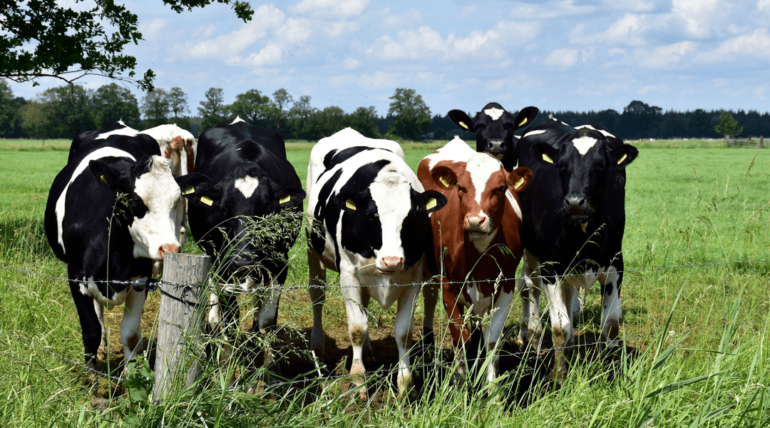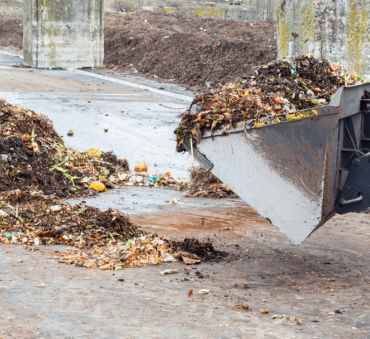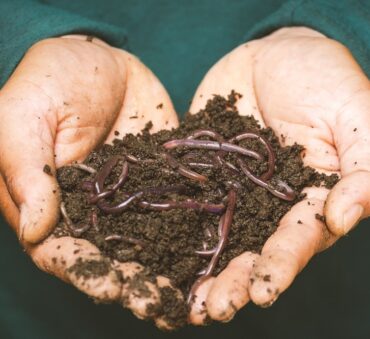Proper animal waste management plays a pivotal role in safeguarding water quality, mitigating greenhouse gas emissions, and maintaining soil health.
But it often gets overlooked.
However, as our world faces growing environmental challenges, it becomes increasingly imperative to address the impact of animal farm waste on our ecosystems. Also, animal waste management comes with its own benefits that can make it a win-win situation for your business.
In this article, we’ll delve into the world of animal waste management, exploring its significance, potential uses, eco-friendly methods, and regulations.
Key Takeaways
- Understanding the constituents of animal waste, including manure, bedding materials, and spilled feed, is crucial for effective waste management.
- Mismanaged animal waste can lead to water pollution, greenhouse gas emissions, and soil degradation, adversely impacting the environment and human health.
- Animal waste can be used as a natural fertilizer, a renewable energy source for biogas production, and a means to generate income.
- Different animal waste management methods, such as composting, vermiculture, and anaerobic digestion, provide options for environmentally responsible waste disposal.
- Regulations like the Clean Water Act, CERCLA, and RCRA in the United States govern the proper handling and disposal of animal waste to prevent pollution and protect ecosystems.
What is Farm Animal Waste
In the agriculture industry, farm animal waste includes a diverse range of organic materials generated by livestock and poultry. This waste includes:
- Manure: This is the primary component of animal waste. It consists of feces and urine from various farm animals. It also contains nutrients, which are essential for plant growth.
- Bedding materials: Farmers often use bedding materials like straw, sawdust, or wood shavings to provide a comfortable and hygienic resting environment for their animals. As bedding gets soiled with manure and urine, it becomes part of the animal agriculture waste stream.
- Spilled feed and silage: During the feeding process, some feed might be inadvertently spilled or go uneaten. Additionally, fermented forage, known as silage, also contributes to animal waste pollution when it remains unused or becomes spoiled.
- Mortalities: Although unfortunate, animal mortalities are a reality on farms. Proper animal waste disposal, in this case, is critical in order to prevent environmental contamination.
- Washwater and wastewater: Farms also produce washwater and wastewater from cleaning animal pens, equipment, and facilities. These may contain organic matter and contaminants and are considered hazardous waste. As such, they need to undergo proper handling and treatment.
The Environmental Consequences of Mismanaged Animal Waste
When animal waste is not handled with care and precision, it can negatively impact our environment, affecting the quality of our air, soil, and water sources.
Pollution of Water Sources
Mismanaged animal waste can lead to water pollution. When manure and other waste materials are not appropriately collected and treated, they can leach into nearby water bodies, contaminating rivers, streams, and groundwater with:
- Harmful pathogens
- Nitrogen
- Phosphorus
- Other pollutants
For example, excess nutrients like nitrogen and phosphorus can lead to nutrient overloading in water bodies, causing algal blooms. This depletes oxygen levels in the water, leading to dead zones where aquatic life struggles to survive.
Contaminated water can also pose serious health risks to humans, affecting drinking water supplies and recreational areas.
Greenhouse Gas Emissions
When animal waste decomposes in anaerobic conditions (without oxygen), it produces methane gas.
Additionally, excessive use of nitrogen-based fertilizers derived from animal waste can lead to the release of nitrous oxide, another powerful greenhouse gas. These emissions intensify the effects of climate change and contribute to the planet’s rising temperatures.
Did you know: Methane is about 25 times more effective at trapping heat in the atmosphere than carbon dioxide over a 100-year period.
Soil Degradation
Soil degradation can be caused by:
- Improper disposal of animal waste
- Excessive application of manure
- Inadequate manure nutrient management
This can lead to various soil imbalances, reducing its fertility and productivity.
Furthermore, if animal waste is not properly treated or managed, it may contain harmful pathogens and toxins that can negatively impact soil health and inhibit plant growth.
Soil contamination can also lead to food safety concerns when crops grown in such conditions are consumed by humans or animals.
Potential Value & Uses of Animal Waste
When disposed of properly, animal waste can be further used to create other resources, leading to potential cost savings for your agriculture business. Let’s look at:
Nutritional Value of Animal Waste
Animal waste, such as manure and bedding materials, holds a significant nutritional value that can be harnessed to benefit agricultural practices. Here are two essential uses of animal waste in terms of its nutritional content:
Use #1: As a Fertilizer
When properly managed and applied, animal manure enriches the soil with essential nutrients that support plant growth. The nutrient content in animal waste varies depending on the animal’s diet, but it generally includes:
- Nitrogen: Crucial for promoting leafy green growth
- Phosphorus: Supports root development and energy transfer
- Potassium: Aids overall plant health and disease resistance
By incorporating animal waste into the soil, farmers can improve overall crop health and yields.
Use #2: Replenishing Soil Nutrients
Continuous farming can deplete soil nutrients over time, affecting crop productivity.
So, how can animal waste help?
As animal waste decomposes, it gradually releases nutrients, providing a steady supply of essential plant elements.
Additionally, animal waste helps improve soil structure, water retention, and aeration, contributing to healthier and more resilient crops. This natural and sustainable approach to soil enrichment reduces the need for synthetic fertilizers, promoting environmentally friendly agricultural practices.
Energy Value of Animal Waste
Animal waste can also be a valuable source of renewable energy. For example, it can be used in:
Use #1: Biogas Production
Biogas production from animal waste is a sustainable energy generation method.
How does it work?
Biogas is a byproduct of the reaction called anaerobic digestion (when animal waste is broken down in an oxygen-free environment). The resulting biogas is primarily composed of methane, a potent greenhouse gas.
Methane from biogas can be used as a clean-burning fuel for various purposes, such as cooking, heating, and electricity generation.
Use #2: Electricity Generation
Through combined heat and power (CHP) systems, farms can further maximize the energy potential of biogas generated from animal waste recycling.
CHP systems use biogas to produce both electricity and heat simultaneously. The electricity generated can be used to power farm operations and even be supplied to the grid, contributing to local energy needs.
The excess heat generated in the process can be utilized for space heating or hot water production, increasing overall energy efficiency. By incorporating CHP systems fueled by biogas, farms can:
- Reduce their reliance on conventional energy sources
- Lower energy costs
- Minimize their carbon footprint
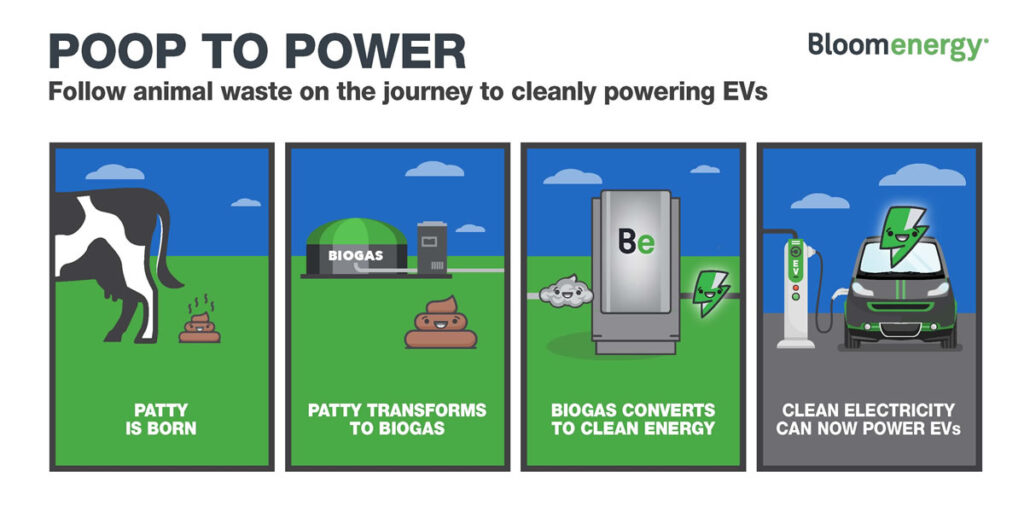
Economic Value of Animal Waste
Apart from its environmental and energy benefits, animal waste also presents significant economic value to farms and agricultural operations. For example, it can result in:
Use #1: Potential Cost Savings in Waste Management
Effective management of animal waste can lead to substantial cost savings for farmers. Instead of treating animal waste as a liability, you can view it as a valuable resource that can be repurposed.
For instance:
- Adopting composting and anaerobic digestion techniques can reduce the need for expensive waste disposal methods.
- Composting animal waste allows farmers to create nutrient-rich organic fertilizers in-house, which reduces the reliance on costly commercial fertilizers.
- Anaerobic digestion produces biogas, which can be used for local use at farming facilities.
Use #2: Income from the Sale of Biogas, Compost, etc.
In addition to cost savings, farms can generate additional income streams from the sale of valuable byproducts derived from animal waste.
For example, you can sell excess biogas to create a new revenue source. Or you can package and sell compost as an organic fertilizer, catering to a growing market of environmentally conscious consumers.
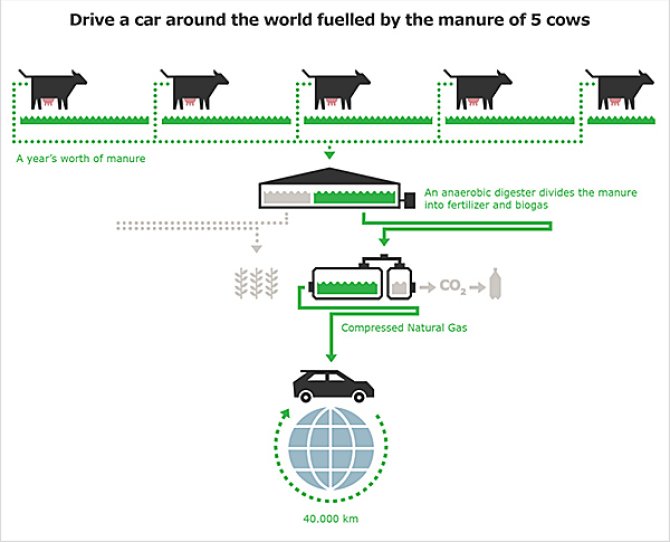
Animal Waste Management Methods
To reduce its environmental impact and harness all the benefits, you can adopt a few different animal waste disposal methods like:
Composting
Composting is a natural and eco-friendly process that transforms organic waste into nutrient-rich compost. It involves the decomposition of organic matter by microorganisms, creating a valuable soil conditioner.
Benefits
- Helps to recycle nutrients from animal waste back into the soil
- Improves soil structure and fertility
- Enriches the soil with essential nutrients, promoting healthier plant growth
- Reduces the volume of waste
- Minimizes odor
- Lowers the risk of water pollution
Challenges
Requires proper management of:
- Carbon-to-nitrogen ratios
- Temperature control
- Aeration
Inadequate management can lead to incomplete decomposition, foul odors, or the proliferation of harmful pathogens.
Vermiculture
Vermiculture (or worm composting), employs earthworms to decompose organic waste, including animal manure, producing nutrient-rich worm castings.
Benefits
Vermiculture can be an effective animal waste removal method as it:
- Breaks down organic matter efficiently
- Increases microbial activity
- Results in worm castings, which are a potent organic fertilizer
- Enhances soil health
- Boosts plant growth
Challenges
Maintaining optimal conditions for earthworms can be hard. These include adequate:
- Temperature
- Moisture
- Food supply
Improper conditions can lead to worm stress and decreased composting efficiency.
Dry Stacking
Dry stacking involves the storage of solid animal waste in carefully constructed stacks or piles. The focus is reducing water content and odor.
Benefits
Dry stacking is:
- Cost-effective
- A good option for easy handling and storage of animal waste
- Reducing moisture content
- Minimizing foul odors
Challenges
To prevent environmental contamination, dry stacking requires:
- Proper site selection
- Regular maintenance
- The management of leachate and runoff
Improper handling may lead to water pollution and odor issues.
Anaerobic Digestion
Anaerobic digestion is a controlled biological process that breaks down organic matter, such as animal waste, in the absence of oxygen.
Benefits
Anaerobic digestion produces the following byproducts:
- Biogas, which can be used for electricity generation, heating, or as a vehicle fuel.
- Nutrient-rich compost, which can be used as a high-quality organic fertilizer.
Challenges
Anaerobic digestion requires:
- Precise temperature
- Strict pH control
- Proper mixing and retention time
Additionally, the initial setup cost and operational complexity may pose challenges for some farms.
Lagoon Systems
Lagoon systems involve the storage of liquid animal waste in large, lined ponds or lagoons for anaerobic decomposition.
Benefits
Lagoon systems offer:
- A low-cost storage solution for liquid waste
- Natural breakdown of organic matter over time
- Reduced volume of waste
Challenges
Lagoon system mismanagement can lead to:
- Foul odors
- Leakage
- Water contamination
Additionally, overloading lagoons or extreme weather conditions can lead to environmental issues.
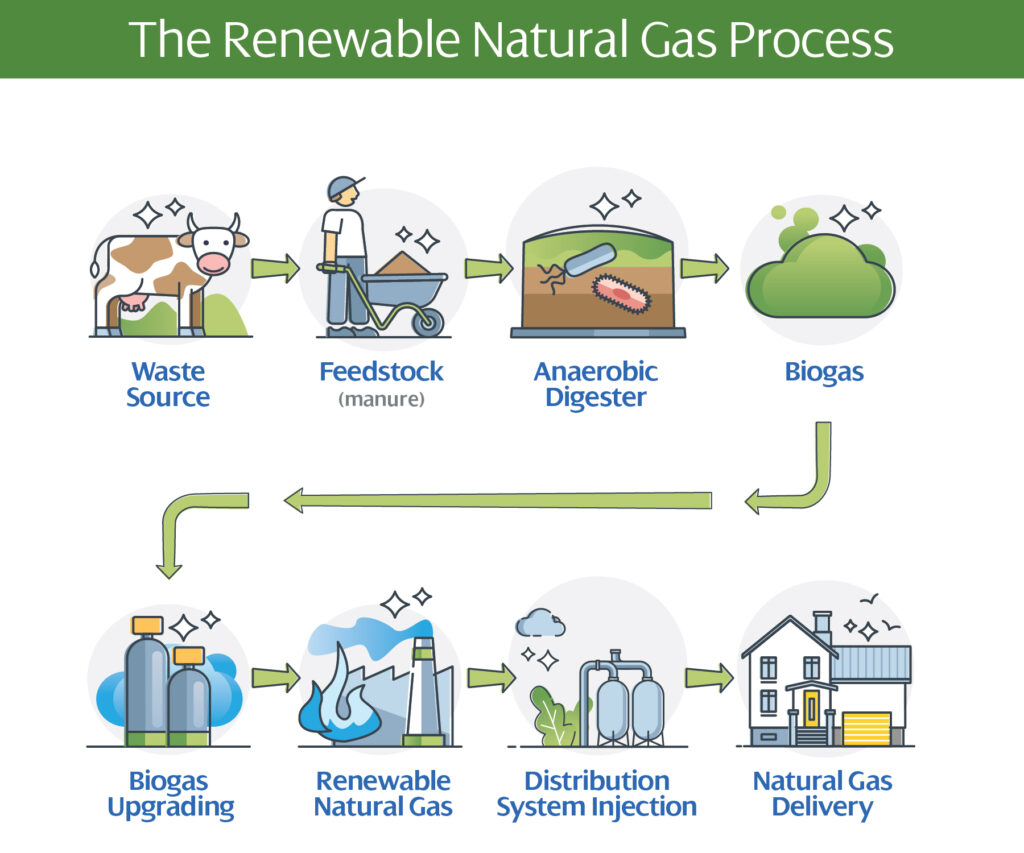
Animal Waste Regulations in the United States
Proper management of animal waste is not only crucial for environmental sustainability but is also governed by various federal laws and regulations. Here are some key animal waste disposal regulations in the US:
Clean Water Act (CWA)
The Clean Water Act (passed in 1972) is one of the most significant environmental laws in the U.S. It addresses water pollution and sets regulations for the discharge of pollutants into navigable waters.
The CWA includes provisions for regulating the discharge of animal waste into water bodies to prevent water pollution and protect aquatic ecosystems.
Comprehensive Environmental Response, Compensation, and Liability Act (CERCLA)
CERCLA (or the Superfund Act) was enacted in 1980 to address hazardous waste sites.
While it primarily focuses on hazardous substances, it may also be relevant to the management of animal waste in certain situations, especially if the waste poses a threat to human health or the environment.
Resource Conservation and Recovery Act (RCRA)
The RCRA (passed in 1976) establishes the framework for solid and hazardous waste management in the US.
While animal waste is generally considered exempt from RCRA regulations, it can become subject to these regulations if it is mixed with hazardous waste or if it poses a risk of harm to human health or the environment.
Conclusion
As our world faces growing environmental challenges, addressing the impact of animal farm waste on ecosystems becomes crucial. The benefits of effective animal waste management extend beyond environmental preservation, offering advantages for businesses as well.
Want to set up responsible animal waste management practices that benefit both the environment and your bottom line?
Shapiro can help! We have vast experience in agricultural waste management and recycling solutions and can help you dispose of various animal waste hassle-free.
Contact us today and leave your animal waste management to the experts.
Frequently Asked Questions
Animal waste can include: manure, bedding materials, spilled feed, urine and other organic matter produced by farm animals.
Animal waste can be used as a natural fertilizer to enrich the soil with essential nutrients. In addition to that, you can use it as a renewable energy source for biogas production. Finally, it’s great for composting to recycle organic matter.
Yes, animal waste can be a component of compost. When mixed with other organic materials like crop residues or yard waste, it undergoes composting, a natural decomposition process.
Manure is a nutrient-rich organic material. It provides plants with essential nutrients like nitrogen, phosphorus, and potassium, promoting healthy growth and improving soil fertility.
Yes, animal waste, particularly manure, can be directly applied to fields as fertilizer. However, you should ensure proper application methods and timing to maximize its benefits and avoid potential negative impacts.
Fertilizers and manure provide nutrients to plants but differ in their origin and composition. The former is synthetic or mineral-based products manufactured to contain specific nutrients. The latter is an organic material derived from animal waste that naturally contains a mix of nutrients and organic matter. Manure provides additional benefits like improving soil structure and moisture retention.
Baily Ramsey, an accomplished marketing specialist, brings a unique blend of anthropological insight and marketing finesse to the digital landscape. Specializing in educational content creation, she creates content for various industries, with a particular interest in environmental initiatives.
